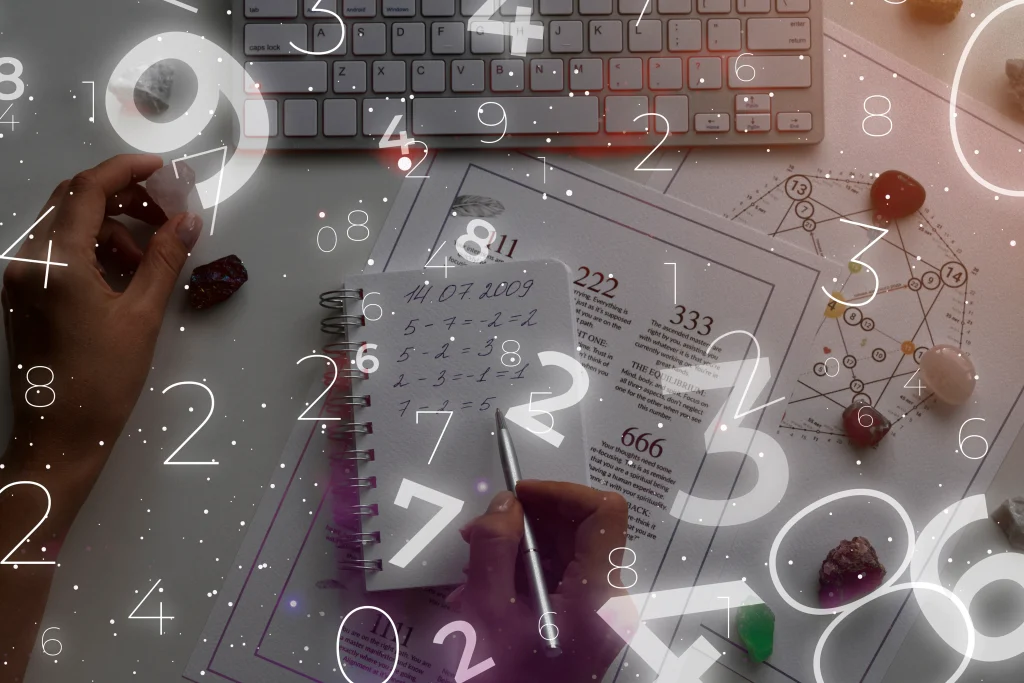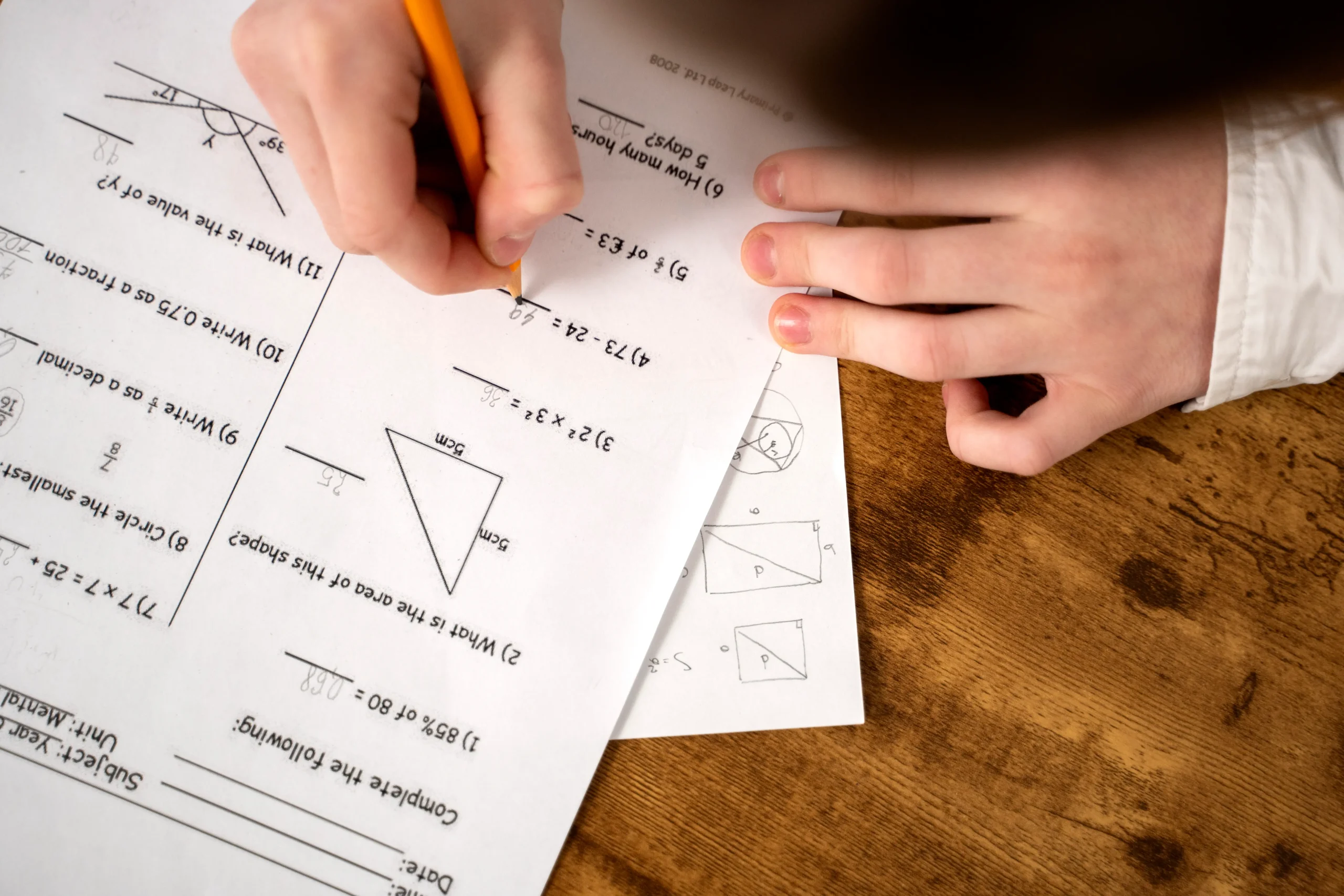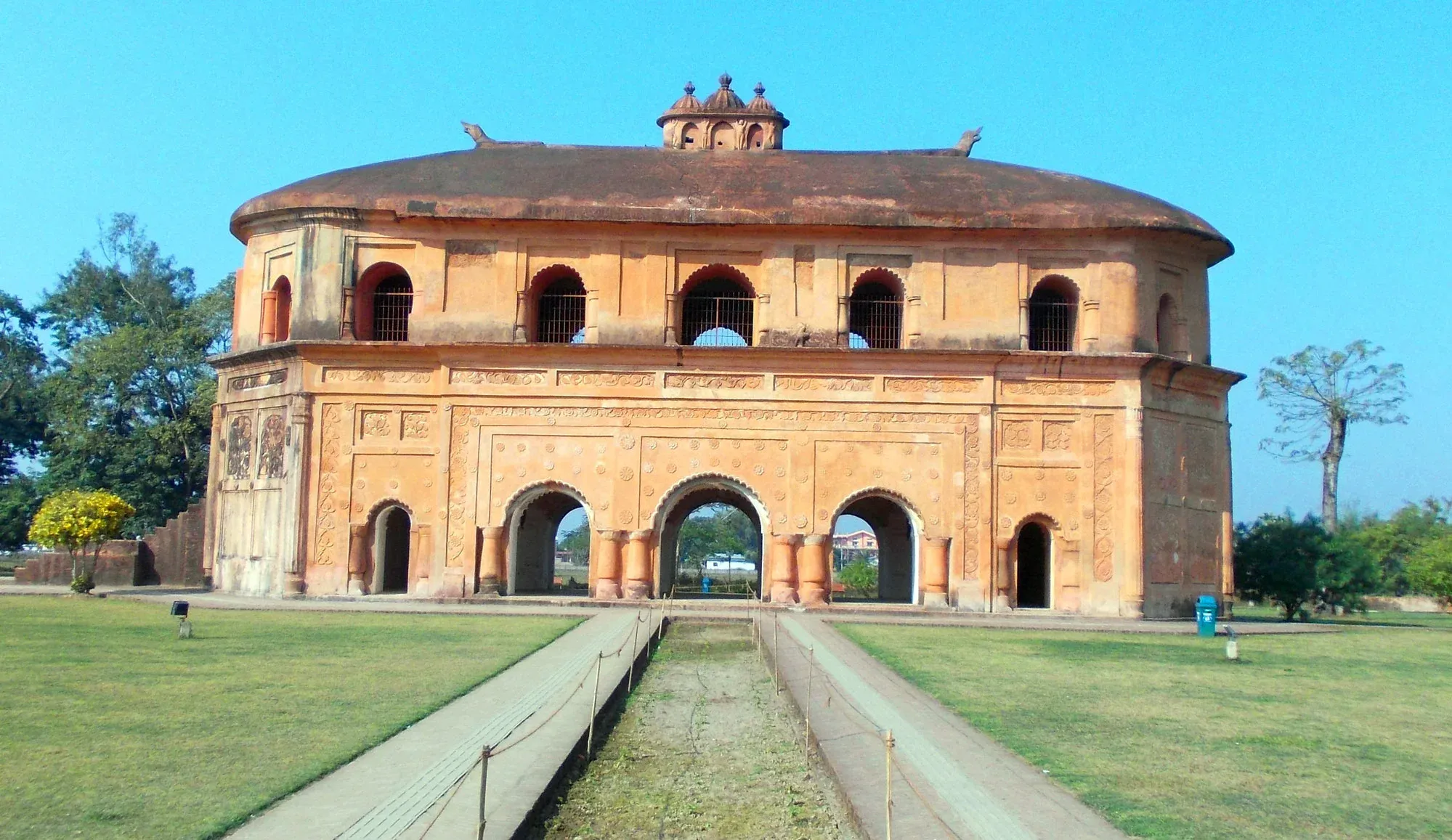Practicing maths MCQ questions is a smart way to build speed, accuracy, and confidence in problem-solving. This collection focuses on essential areas like arithmetic, basic algebra, and percentages, with carefully chosen problems that are clear, engaging, and effective for daily practice. Whether you are preparing for school tests, competitive exams, or simply brushing up on your skills, these MCQs offer the right mix of challenge and clarity. Each question is designed to help you think faster, avoid common mistakes, and develop strong logical reasoning. Make maths practice a part of your routine and watch your performance improve day by day.
60 Maths MCQ Questions with Answers

- A man can complete a work in 12 days. A woman can do the same work in 16 days. If both work together for 4 days, how much of the work is left?
A) 1/3
B) 5/12
C) 7/12
D) ¼
Answer: B) 5/12
- The average age of 40 students is 15 years. If 5 students leave and the average of remaining students becomes 14.5 years, what was the average age of the 5 students who left?
A) 18
B) 17
C) 15
D) 19.5
Answer: D) 19.5
- A sum of ₹12,000 amounts to ₹15,600 in 2 years at simple interest. What is the rate of interest per annum?
A) 12%
B) 15%
C) 14%
D) 18%
Answer: A) 15%
- A train running at 72 km/h crosses a pole in 25 seconds. What is the length of the train?
A) 500 m
B) 400 m
C) 450 m
D) 520 m
Answer: B) 500 m
- If the ratio of the present ages of A and B is 4:5, and after 6 years their ages will be in the ratio 5:6, what is the present age of A?
A) 24
B) 30
C) 36
D) 20
Answer: A) 24
- A person sold an article at 10% loss. Had he sold it for ₹80 more, he would have gained 10%. What is the cost price of the article?
A) ₹400
B) ₹350
C) ₹500
D) ₹450
Answer: C) ₹500
- If 2x + 3y = 12 and 4x – 5y = –2, what is the value of x and y?
A) x = 3, y = 2
B) x = 2, y = 2
C) x = 2, y = 3
D) x = 1, y = 2
Answer: B) x = 2, y = 2
- A boat can travel 30 km downstream in 2 hours and 18 km upstream in 3 hours. What is the speed of the boat in still water?
A) 10.5 km/h
B) 12 km/h
C) 9 km/h
D) 7.5 km/h
Answer: A) 10.5 km/h
- A shopkeeper marks his goods 40% above the cost price and allows a discount of 10%. What is the profit percentage?
A) 26%
B) 30%
C) 28%
D) 20%
Answer: A) 26%
- A can do a piece of work in 10 days, and B in 15 days. They worked together for 5 days. Then B left and A finished the remaining work alone. In how many total days was the work completed?
A) 8
B) 9
C) 7
D) 10
Answer: B) 9
- A number is divided into two parts such that 5 times the first part equals 7 times the second part. If the sum of the two parts is 96, what is the first part?
A) 56
B) 40
C) 60
D) 36
Answer: D) 36
- A can complete a job in 8 days and B in 12 days. They start working together, but B leaves after 3 days. In how many days will A complete the remaining work?
A) 3
B) 2
C) 4
D) 5
Answer: A) 3
- The compound interest on ₹8,000 for 2 years at 10% per annum is:
A) ₹1,600
B) ₹1,680
C) ₹1,720
D) ₹1,500
Answer: B) ₹1,680
- A person sells two articles at ₹990 each. On one, he gains 10% and on the other, he loses 10%. What is the overall gain or loss?
A) No loss, no gain
B) 1% loss
C) 1% gain
D) 2% loss
Answer: D) 1% loss
- A sum triples itself in 8 years at simple interest. In how many years will it become five times itself at the same rate?
A) 16
B) 20
C) 24
D) 32
Answer: C) 24
- If 1/4 of a number is 20 more than 1/6 of the same number, what is the number?
A) 240
B) 360
C) 120
D) 180
Answer: D) 120
- Two pipes can fill a tank in 20 minutes and 30 minutes respectively. If both are opened together, how long will it take to fill the tank?
A) 10 min
B) 12 min
C) 15 min
D) 18 min
Answer: B) 12 min
- If the area of a circle is 154 cm², what is the radius? (Take π = 22/7)
A) 6 cm
B) 7 cm
C) 5 cm
D) 8 cm
Answer: B) 7 cm
- The ratio of incomes of A and B is 3:4, and the ratio of their expenditures is 4:5. If both save ₹4,000 each, what is A’s income?
A) ₹24,000
B) ₹20,000
C) ₹30,000
D) ₹16,000
Answer: B) ₹20,000
- A person travels from A to B at 40 km/h and returns at 60 km/h. What is the average speed for the whole journey?
A) 48 km/h
B) 50 km/h
C) 45 km/h
D) 52 km/h
Answer: A) 48 km/h
- A sum of ₹10,000 is invested at compound interest at 10% per annum. What will be the amount after 3 years?
A) ₹13,310
B) ₹13,000
C) ₹13,210
D) ₹13,300
Answer: A) ₹13,310
- The marked price of an article is ₹800. A shopkeeper gives two successive discounts of 10% and 5%. What is the final selling price?
A) ₹684
B) ₹680
C) ₹685
D) ₹700
Answer: A) ₹684
- A and B can do a job together in 12 days. B alone can do it in 20 days. How many days will A alone take to complete the job?
A) 30
B) 25
C) 24
D) 18
Answer: C) 30
- The average of 10 numbers is 20. If two numbers, 30 and 40, are removed, what is the average of the remaining numbers?
A) 17.5
B) 18
C) 16.5
D) 15
Answer: C) 16.5
- If x² + 1/x² = 17, find the value of x + 1/x.
A) 4
B) 5
C) 3
D) Cannot be determined
Answer: B) 5
- What is the simple interest on ₹6,000 at 8% per annum for 3 years?
A) ₹1,440
B) ₹1,600
C) ₹1,480
D) ₹1,520
Answer: A) ₹1,440
- Two numbers are in the ratio 7:9. If their difference is 16, what are the numbers?
A) 56, 72
B) 63, 81
C) 48, 64
D) 36, 52
Answer: A) 56, 72
- A shopkeeper sells two items for ₹600 each. On one, he gains 20%, and on the other, he loses 20%. What is the overall result?
A) No profit, no loss
B) 4% loss
C) 2% loss
D) 1% gain
Answer: B) 4% loss
- What will be the compound interest on ₹5,000 for 2 years at 10% p.a., compounded annually?
A) ₹1,050
B) ₹1,100
C) ₹1,200
D) ₹1,000
Answer: A) ₹1,050
- A sum of money is divided among A, B, and C in the ratio 2:3:5. If C receives ₹500, what is the total amount?
A) ₹1,200
B) ₹1,000
C) ₹800
D) ₹1,250
Answer: A) ₹1,200
- If the average of five consecutive odd numbers is 45, what is the smallest number among them?
A) 41
B) 43
C) 39
D) 45
Answer: A) 41
- A mixture contains milk and water in the ratio 7:2. How much water must be added to 36 litres of mixture to make the ratio 7:3?
A) 3 litres
B) 2 litres
C) 4 litres
D) 5 litres
Answer: C) 4 litres
- A can finish a piece of work in 10 days and B can finish the same work in 15 days. They work together for 3 days, and then A leaves. How many more days will B alone take to complete the remaining work?
A) 15 days
B) 12 days
C) 20 days
D) 18 days
Answer: A) 15 days
- A train 150 meters long passes a platform 200 meters long in 20 seconds. What is the speed of the train in km/h?
A) 60
B) 63
C) 63.5
D) 63.75
Answer: D) 63.75
- 35. The selling price of an article is ₹900, and the loss is 10%. What is the cost price?
A) ₹950
B) ₹1,000
C) ₹1,050
D) ₹1,100
Answer: B) ₹1,000
- A, B, and C divide ₹4,200 among themselves in the ratio 6:5:7. What is C’s share?
A) ₹1,400
B) ₹1,800
C) ₹1,500
D) ₹1,200
Answer: A) ₹1,400
- If x + 1/x = 4, then x² + 1/x² = ?
A) 14
B) 12
C) 10
D) 16
Answer: B) 14
- A man borrows ₹2,000 at 5% simple interest. What amount will he repay after 4 years?
A) ₹2,400
B) ₹2,200
C) ₹2,100
D) ₹2,500
Answer: A) ₹2,400
- The area of a rectangle is 96 cm² and its length is 12 cm. What is the perimeter of the rectangle?
A) 32 cm
B) 36 cm
C) 40 cm
D) 44 cm
Answer: C) 40 cm
- A man can row 15 km downstream in 30 minutes. If the speed of the stream is 10 km/h, what is the speed of the boat in still water?
A) 20 km/h
B) 25 km/h
C) 15 km/h
D) 10 km/h
Answer: A) 20 km/h
- The difference between compound interest and simple interest on ₹5,000 for 2 years at 10% per annum is:
A) ₹50
B) ₹45
C) ₹40
D) ₹60
Answer: A) ₹50
- A man buys an article for ₹750 and sells it at a loss of 14%. What is the selling price?
A) ₹645
B) ₹655
C) ₹660
D) ₹670
Answer: A) ₹645
- A sum becomes ₹1,764 in 2 years and ₹2,160 in 4 years at simple interest. What is the principal?
A) ₹1,440
B) ₹1,500
C) ₹1,320
D) ₹1,260
Answer: A) ₹1,440
- What is the smallest number that when increased by 5 is divisible by 12, 18, and 30?
A) 175
B) 175
C) 175
D) 175
Answer: A) 175
- Two numbers are in the ratio 3:4. Their LCM is 180. What is the sum of the numbers?
A) 120
B) 105
C) 100
D) 108
Answer: B) 105
- A shopkeeper allows a discount of 20% and still makes a profit of 20%. What is the mark-up percentage?
A) 50%
B) 60%
C) 40%
D) 45%
Answer: B) 60%
- A and B together can finish a work in 20 days. B alone can finish it in 30 days. In how many days can A alone finish the work?
A) 60
B) 40
C) 45
D) 50
Answer: B) 60
- If the radius of a cylinder is doubled and height is halved, then the volume:
A) Remains same
B) Doubles
C) Becomes four times
D) Becomes two times
Answer: A) Remains same
- A train covers 480 km at a uniform speed. If the speed had been 8 km/h more, it would have taken 3 hours less. What is the original speed of the train?
A) 32 km/h
B) 40 km/h
C) 48 km/h
D) 60 km/h
Answer: B) 40 km/h
- If A’s salary is 25% more than B’s, how much percent is B’s salary less than A’s?
A) 20%
B) 25%
C) 22%
D) 18%
Answer: A) 20%
- A sum of ₹10,000 earns a compound interest of ₹2,100 in 2 years. What is the rate of interest per annum?
A) 10%
B) 11%
C) 9%
D) 12%
Answer: B) 10% (CI on ₹10,000 for 2 years at 10% = ₹2,100)
- A can do a work in 15 days and B in 20 days. With the help of C, they finish it in 6 days. How many days will C take to do the work alone?
A) 10
B) 12
C) 16
D) 18
Answer: C) 16
- The average of 7 consecutive numbers is 20. What is the largest number in the group?
A) 24
B) 22
C) 26
D) 23
Answer: A) 24
- If 3x – 7 = 2x + 5, what is the value of x?
A) 12
B) –12
C) 10
D) 2
Answer: D) 12
- If the price of sugar increases by 25%, by what percent should consumption be reduced to keep the expenditure same?
A) 20%
B) 25%
C) 15%
D) 30%
Answer: A) 20%
- A and B together have ₹1,200. If 3/5 of A’s money equals 2/3 of B’s money, how much does A have?
A) ₹700
B) ₹800
C) ₹500
D) ₹600
Answer: D) ₹600
- A can complete a work in 24 days. B is 50% more efficient than A. In how many days can B complete the work?
A) 12
B) 16
C) 18
D) 20
Answer: C) 16
- The average of 25 numbers is 36. The average of first 13 numbers is 32 and that of last 13 numbers is 40. What is the 13th number?
A) 36
B) 38
C) 40
D) 44
Answer: A) 36
- The ratio of speed of two trains is 5:3. If the first train covers 300 km in 5 hours, what is the speed of the second train?
A) 60 km/h
B) 90 km/h
C) 40 km/h
D) 45 km/h
Answer: C) 40 km/h
- The cost price of 20 articles is equal to the selling price of 16 articles. What is the profit percentage?
A) 25%
B) 20%
C) 30%
D) 18%
Answer: A) 25%
Wrapping Up
Regularly practicing maths MCQ questions is one of the most effective ways to sharpen your skills and boost your confidence in problem-solving. By focusing on key areas like arithmetic, algebra, and percentages, you can improve both speed and accuracy in exams or daily calculations. Remember, consistency is the key. Solving just a few questions every day can make a big difference over time. Keep challenging yourself with new problems, track your progress, and enjoy the learning process. With the right practice, maths will soon feel less like a challenge and more like a skill you’ve mastered.





